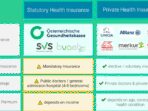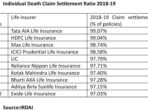Health Insurance Georgia – Share this page on Facebook (open in a new tab) Share this page on X (open in a new table) Share this page on LinkedIn (Open in a new tab) Share this page via email printing of this page
Affordable Care Act (ACA) ACTUALLY AFTER 1 JANUARY 2014, with the introduction of reform in health insurance and new health protection options in Georgia and elsewhere nationwide. Thousands of Georgians are enrolled in health protection in the new health insurance market, but Georgia has not implemented the Medicaid expansion, and many low -income adults in the state are unlikely to be insured. This information page provides an overview of the population health, health protection and healthcare liver systems in Georgia in the era of health reform.
Health Insurance Georgia
Georgia, located in the southern region of the United States, is home to more than 9.6 million people, making it the most populated state in the United States and the third most resident in the south, to Texas and Florida. With nearly 58,000 square kilometers, Georgia is the 30
New Federal Fix Expands The Number Of Georgia Families Who Qualify For Affordable Health Coverage
Larger States.1 Much in Georgia is rural, including 37 of the 159 state belonging to the Apalachian region. However, a majority of the state population (87%) lives in metropolitan areas. Georgia’s three most populated scores (Fulton, Gwinett and COBB) are more than one quarter (26%) in the state population.2
Georgia is race and ethnically diverse. Color people account for 44% of the state population compared to 37% of the national population (Figure 2). Compared to the United States in general, a larger part of Jeorian has been identified than black (30% versus 12% nationally). Almost 8% of all blacks in the United States live in Georgia. Spanish accounts for 8%of the population in Georgia, which is less than the US share in general (17%), but the Spanish population of Georgia has grown a lot in recent decade.3 About half of the population in Georgia (56%) identified as non -Spanish whites.
Other social and demographic population models in Georgia, including citizenship status and age distribution, ICE other states in the south and the United States in general (Table 1). Nearly three out of ten Georgian (28%) residents are children, more than nine out of ten (91%) are US citizens, and about three out of ten adults with No (31%) have at least one university degree. Three quarters residents (75%) live in a home with at least one full -time worker.
While the general part of Georgian living in poverty is only slightly above the national average (22% versus 20% nationally), Georgia has wide differences in poverty by race/ethnicity and age. Black and Spanish are more than twice as likely as white in Georgia to be poor (Figure 3). Children in Georgia are also much more likely than adults in a poor home. From 2012, three out of ten Georgian children under the age of 19 lived in poverty, compared to one of five adults with gene (21%) and 9% of the seniors of 65 years and older.4
What Health Insurance Options Are Available Through The Georgia Marketplace?
Georgia’s economy continues to recover slowly after the recent recession, but unemployment remains great. From August 2014, Georgia has the highest unemployment rate in the country (8.1%), which is higher than the national unemployment rate of 6.1%.5 Nevertheless, there have been moderate economic recovery in Georgia over the past few years, with the state budget official which predicted the ongoing economic growth in the next fiscal year.6 In 2013, the total Georgia state of gross domestic products (GDP) was $ 425 billion, making it 11 at 11
The largest economy in the country. Georgia 7 also experienced a 1.8% increase in its GDP between 2012 and 2013, equal to the national average.8 healthcare and social assistance is the largest industry in the state, which is a quarter of the total increase in the GDP between 2012 and 2013.9 Other main subjects make up Private industries in Georgia include manufacturing and real estate.10
For health among seniors. 11 On the Commonwealth Fund -Ranks of the performance of the state’s health system fell georgia of 35

Between 2007 and 2012.12 Compared to other states, Georgia has a high mortality rate associated with HIV, as well as death rates in diabetes and heart disease above the national average.13 In contrast, suicide and alcohol and drug rates with death rates in Georgia national average.14 While Georgia has one of the highest teenage pregnancy rates in the country, the number of teenage pregnancies has gradually decreased, and the rate is less than half of it two decades ago.15
Health Insurance Georgia (plans From $0/month)
Differences in health and healthcare exist in Georgia. As in other countries across the country, the measures of health status in Georgia vary by race/ethnicity (Table 2). Compared to black and Spanish people, a larger part of white residents in Georgia smoked and often reported spiritual distress, but it is less likely to be obese or have diabetes. White residents in Georgia are almost twice as likely as black people have not had a doctor’s visit over the past two years, but it is more likely than black and Spanish people to report with a normal source of care health. More than half (56%) of Spanish in Georgia reports that they do not have an ordinary source of care, compared to less than a quarter (24%) in whites. These trends are mainly in line with national data on health status and access by race and ethnicity.
NSD = not enough data. The data was suppressed for confidentiality or unreliable due to small sample size. Data may not be the sum of 100% due to rounding and data restrictions. Data for white and black excluding Spanish.
Source: KCMU analysis of the Center for Disease Control and Prevention’s (CDC) Behavior Monitoring System (BRFSS) 2012 Recording results
As in other countries, most Georgians are covered by private health insurance. From 2012, nearly six out of ten (58%) were covered under an employer plan or the individual private market (Figure 4).
In 2023, Ga Gop Rolled Out Their Failed Pathway For Access To Health Insurance Program, Promising It Would Cover 345,000 People. But Two Years Later, Just 6,503 Georgians Are Enrolled. The Numbers
One of the five Georgians (20%) is enrolled for Medicaid of Children’s Health Insurance Program (chip), also known in Georgia as Peach Care for Children. Medicaid and chip help fill gaps in the availability of private protection, especially for children, as adult Medicaid qualifications have historically been limited to very low income parents. From 2012, four of the ten Georgian children (40%) were enrolled in Medicaid of Chip, compared to about one in ten adults with gene (11%). Georgia 16 was particularly successful in promoting registration in her child protection program in contact with the adoption of a number of simplification of the registration process that facilitated it for families to apply and maintain protection. In 2011, the Department of Community Health in Georgia received a federal grant of $ 2.5 million to implement technological improvements that simplified registration and renewal for Medicaid and Peachcare for children.17 But before 2014, about 182,000 unsecured children were in Georgia in Georgia in Georgia Notice for Medicaid or Chip, but not registered.18
While a majority of Medicaid registers in Georgia are children, seniors and disabilities are most of the costs in the program. From the 2010 financial year, children accounted for 60% of the Medicaid register in Georgia, but made up about a quarter (26%) of total Medicaid costs (Figure 5) .19 In contrast, elderly and people with adult disabilities for Less than less than one quarter (24%) of the people who register, but 60% of the total program costs. The average cost of each recipient in Georgia was $ 3, 916, the second lowest in the country to California, and much less than the national average of $ 5, 563.20
Medicaid costs are shared by the state and the federal government, and the federal government pays more than two -thirds (67%) at the expense of Georgia Medicaid. For every dollar that Georgia spends on Medicaid, the federal government sends $ 2.02 to matching funds in the state.21 Georgia also offers protection to children with revenue of up to 252% FPL to a separate chip program, for which the federal government 78% paid in the price of A.22 Medicaid costs accounted for 22% of total state costs in the 2013 financial year, 15% of the general financing costs of the general state, and 45% of all federal funds passed by the state (Figure 6) .23 Medicaid is the second largest the category of general state funds behind elemental and secondary education, but is an important source of the federal fund flowing in the state.24

Although Medicaid and Chip play an important role in protecting some populations in Georgia, very unsecured. From 2012, Georgia had one of the highest unsecured rates in the country, with more than one of the five residents who are not in the area did not have protection (see Figure 4). More than one in five Georgians (22%) (1.8 million people) were not insured – 7
Buy Travel & Health Insurance For Georgia
Higher unsecured rates in the country. The most recent estimate of the uninsured in 2014 indicates that the unsecured rates in Georgia will increase relative to other states. Like those who are not insured in other countries, most Georgians who are not insurance are people from home. Nine out of ten unsecured people in Georgia (90%) have an income below 400%FPL, and three cases (75%) of the unsecured have at least one full -time worker at home (Figure 7) .25 Card in ten unsecured unsecured unsecured. People in Georgia are white but people of color form a larger part (60%)







